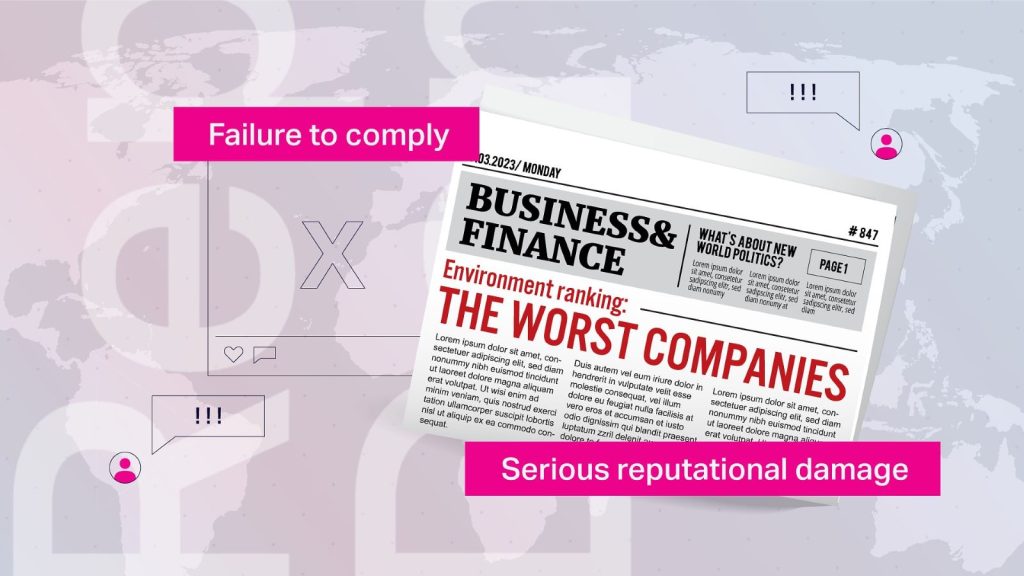The rise of mobile phone viewing, globally, across all industries, is transforming the way that content creators work. The term ‘ Vertical first’ when it comes to video production is where you skip creating the standard HD horizontal video that we all know, and hop straight onto vertical (or portrait) formats more suited to mobile phone viewing. You’re making the video vertically from the start – intentionally, it’s not an afterthought after an existing landscape version.
Whether or not your company or charity organisation chooses a ‘vertical first’ approach to video production depends on your platforms and your audience. If you’re unsure what aspect ratio your videos should be, a professional video production company that creates social media video content can advise you on this.
In this post, we’ve briefly explained the most common places to show a promotional video and what size is best for each platform. However, quick spoiler alert: for most organisations, there are many benefits to creating more vertical content to optimise your social media strategy. Here are some quick guides and tips for increased engagement with your video content, and why relying on just landscape video (even when made professionally) is a mistake and missed opportunity.
Displaying Video On Your Website
Web video is not strictly social media video production, but most folk getting a video for their website also use it on social, so it’s often seen as a little interchangable. Websites, historically, have generally been made for desktop browsers, but more and more, like everything, people are accessing them on mobile phones. You can see how people access your website by looking at web traffic and refining it to see the mobile traffic. In Google Analytics, going to User and then Tech, it’ll give you a good idea. Quick example. For the past 90 days, our web traffic at Digital Finch has been 73.3% Desktop, 26.1% mobile and 0.6% Tablet. So it’s definitely worth considering our site’s mobile experience and videos, but it’s not the majority. As a b2b industry, it is more typical that it’s not mobile-first for the site – your stats might be different.
If mobile traffic is high, it’s worth focusing on the mobile view of your site for excellent usability and opting for vertical videos. It’s also worth looking at the trend of mobile users; if it’s not substantial now, is it growing? If you review time on-site for mobile users, that will also let you know if they are struggling at all in general with your site usability.
Format: Either
Playing Videos in Meetings
Sales and marketing videos for in-person meetings are generally still landscape. Whether a company video is played alone or Embedded in PowerPoint, the TV screen is horizontal. Or if you don’t use the big screen, you may still be using a tablet or laptop to display media – which is still broadly landscape. So, if this is your primary or essential method of business communication whether with stakeholders or customers, then continue with horizontal videos which take up the whole screen and look better.
Video Format: Horizontal

Facebook Videos
Facebook is still a mix of landscape, square and vertical video. However, being linked to Instagram, Reels and Stories can be shared easily on Facebook pages. So, if you’re already producing video content for Instagram, you may as well keep it vertical for Facebook, too. As vertical is the preference for engagement. If you’re filming horizontally and only posting to Facebook, it might be worth making it square if you are time-short. Buffer did a video study and they found that square videos got 30 to 35% more views and 100% more engagement versus landscape videos.
Video Format: Either, but vertical is an easy choice if you’re already posting on Instagram. And opt for Square over landscape if you can.
Instagram Reels, Posts and Stories
With a mixture of Stories, Reels, and posts (IG TV has taken a back seat), you have a choice of options here, from landscape, square, and portrait. And also somewhere in between. Reels and stories are vertical. To stop the doom scroll and make the audience pause, you want to fill the screen with your video as much as possible and stop them from being distracted, so I recommend always picking verticals for the Instagram audience.
If you post a mixture of formats, for example, some shot on a phone, some professionally made, some images, etc., you can check the Instagram statistics to see which posts are the most engaging and what kinds of trends are there.
Video Format: Preference would be vertical, then square, but other sizes are accepted
Linkedin Business Videos
LinkedIn is the outlier here, as it’s still landscape or close to it. It adds a lot of padding to a vertical video, which looks worse. So, if your audience is primarily LinkedIn and business-to-business, then for now, stick to a landscape or square format for your video. There are rumours it will be upgraded to suit the rest, but there’s no timeline on this just yet.
Video Format: Horizontal
Twitter Video
80% of people accessing Twitter are on mobiles, so with that in mind square should be a preference over landscape for screen real estate and engagement, from brands it’s a very mixed picture for their Twitter videos, and many don’t post a lot of video content there – so this is really up to you. It’s also worth bearing in mind Twitter’s audience is around 70% male, so to reach more people, don’t make this your only platform.
Format: Square or Landscape
new from #GoogleIO: preview your whole journey before you go with Immersive View for routes (🧵) pic.twitter.com/1lRp1HvgKl
— Google Maps (@googlemaps) May 10, 2023
A Summer Escape https://t.co/ZQZU9ZQaao pic.twitter.com/0gtwXOKST0
— ZARA (@ZARA) June 2, 2023
Tik Tok Promotions
TikTok is vertical only, so if that’s your audience, don’t bother with landscape videos and go vertical first. Very simple.
Video Format: Vertical
Youtube Video Marketing
YouTube was historically landscape and is still a significant way to bring traffic to your website or other platforms (Google favours its own platform, so it will push you up in the rankings SEO wise). This is also a great place for longer form content as well as quick videos. Now, they have released YouTube Shorts, so your vertical content goes there, too, without being displayed poorly. Youtube shorts tends to be more amateur content at the moment, but brands are posting there too. It’s definitely a confusing situation on Youtube, there are many square videos in shorts, with black bars around, and some vertical videos being forced into landscape, so it’s still finding its feet. You can take your pick here, but again, vertical may be more future proof.
Video Format: Any
What are the next steps for your social media video strategy?
After analysing where your audience views your content, and how they view it, you may find you still need landscape videos, a mix of formats, or you need to take a bold step to a vertical first approach to video production to increase drastically engagement.
I may have also taken this for granted, but if you’re not posting on social media, there is also a missed opportunity in general!
If you already post on Instagram or TikTok vertically, you may as well post to Facebook and YouTube shorts in the same ratio. That’s a quick win.
If you’re only posting horizontal content right now, for most videos, creating a square version will increase engagement over a landscape one, and can be quick to do (a bit quicker than vertical conversion). Though If you have the time and/ or budget, go vertical. Engagement is up to 4 times more than a square version on Facebook for example.
I see many organisations (and video production companies!) hesitant to change to a vertical first approach for video content and keep creating and posting landscape or square content only on Instagram, for example. Posting only horizontal video content is a missed opportunity to command more attention for your amazing content.
I understand a lot of production companies’ unwillingness to change, Vimeo is still landscape, the camera lens is landscape, and we’re editing on landscape screens. Change is hard – but it’s happening whether we like it or not.
If you are procuring video production from a video studio or agency, make sure you have a proper discussion with the video production company about the platform(s) and target audience for your video before they default to a landscape video – which often happens, as you may be missing out on important engagement.
Essentially, if your video viewers are on a mobile device, you want to take up as much real estate as possible on someone’s mobile phone screen. This gives your videos more than 10x more visibility. The hierarchy for most of these platforms is vertical, square, and then landscape.
Many video companies now offer social media versions of longer web or presentation videos. For example, you have a longer brand or animated video that is landscape for your website homepage. And once that is completed, the video company will create mini edits or alternative versions that are square or vertical for use on social media. This is quite typical for us to create social media versions as many of our clients are not quite ready for vertical first. A few need pushing more though!
Sometimes, these social media edits are included in the cost, and sometimes, it’s additional, so it’s good to clarify if they can offer this as a service and what extra it may be.
Let me know what you think, and if you’re after a video or a series for your social media, just send us message.



